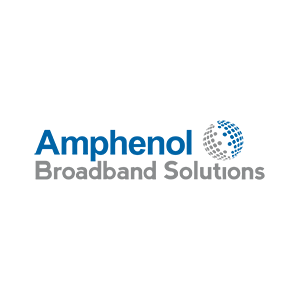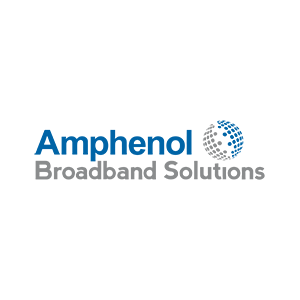Title Page
-
Site conducted
-
Vendor/ Site
-
Audited By
-
Date and Time Audit Conducted
-
Location
I. AUDIT OPENING MEETING
-
Instruction:
----------------------
1. Answer all the questions and fields below.
2. Add photos and notes by clicking on the paperclip icon, if applicable.
3. To add a Corrective Action click on the paperclip icon then "Add Action", provide a description, assign to a member, set priority and due date.
4. Complete audit by providing digital signature.
5. Share your report by exporting as PDF, Word, Excel or Web Link.
I. AUDIT OPENING MEETING
-
Title
-
Purpose
-
Scope
-
DOCUMENTS
-
Click "Add Document"
Document
-
Title of Document
II. IMPROVEMENT - PREVIOUS AUDIT
II. IMPROVEMENT – PREVIOUS AUDIT
6.1, 10.2 & 10.3 Improvement
-
PAST ACTION REQUESTS
-
Corrective Actions
-
Was/Were Corrective Action(s) completed?
-
Preventive Actions
-
Was/Were Preventive Action(s) completed?
-
Risk Opportunities
-
Was/Were Risk Opportunity(s) completed?
-
OFIs
-
Was/Were OFI(s) completed?
-
Comments
-
Add media
III. QMS PROCESSES
III. QMS PROCESS
4.4 Quality Management System and its Processes
-
A. Verify that the following have been identified, defined and documented for the process being audited:
-
(i). Inputs and Outputs to the process
-
(ii). Criteria, method and performance indicators of the process
-
(iii). Resources needed for the process<br>
-
(iv). Risks and Opportunities in the process
-
B. Verify that the process has defined:
-
(i). Needed documented information to support its operation
-
(ii). Documented information to be retained as evidence that the process is being carried out as planned
IV. SUPPORT
IV. SUPPORT
(Reavaliar) A. RESOURCES
7.1.4 & 7.1.5 Environment for the operation of the process
-
(i). Is the process being audited providing and maintaining the work environment needed to achieve conformity to product and service requirements?
-
(ii). Has the process being audited determined the monitoring and measurement to be undertaken?
-
(iii). Has the process being audited determined the monitoring and measurement resources needed to provide evidence of conformity to determined requirements?
-
(iv). Are documented information maintained as evidence of fitness for the monitoring and measurement resources?
B. KNOWLEDGE, COMPETENCE, AWARENESS AND TRAINING
7.1.6, 7.2 & 7.3 Knowledge, Competency, Awareness and Training. Has the vendor:
-
Use Auditee and Documents from above, determine if:
-
a. Is the knowledge necessary for the operation of the process determined, maintained, and available?
-
b. Has the vendor determined the necessary competency for personnel performing work affecting product quality? Is there a job description for this job? (Check with HR)
-
c. Has the vendor provided training or taken other actions to satisfy these needs? Ask the supervisor/Manager to show the Terms of Employment Form or HR to show the Training Sign-In Form to verify if employee training was signed off?
-
d. Has the vendor evaluated the effectiveness of the actions taken? Is there objective evidence of the person’s job performance in relationship to this procedure? Performance Review (Check with HR or if not applicable, then are they part of a success record?)
-
e. Ensured that employees are aware of the relevance and importance of their activities and how they contribute to the achievement of the quality objectives. What is the Quality Policy? Does the auditee know how they contributes to the areas goals?
-
f. Maintained appropriate records of education, training, skills and experience. (Check with HR)
-
g. Ensured that the record is legible, identifiable and retrievable? Did the department Manager have specific training records of the procedure the employee uses? (Reference the relevant section of the SOP for Competence, Training and Awareness).
-
h. Ensured that the records are maintained in the location and manner required by the training documents?
-
NOTE: Please see ISO Compliance Coordinator for any impediments that arise in this area.
C. DOCUMENTED INFORMATION
7.5 Control of Documents - Documents of Internal Origin
-
Use documents from above:
-
a. Ensure that relevant versions of applicable documents are available at points of use? <br> Do the user and trainees have access to this document where they would use it?
-
b. Ensure that documents remain legible and readily identifiable.
7.5 Control of Documents - Documents of External Origin
-
a. Ensure that documents of external origin are identified and their distribution controlled? <br> Ask the auditee for a document of external control they have. <br> Is it kept in electronic format from the owner’s website?
-
b. Preventing the unintended use of obsolete documents, and to apply suitable identification to them if they are retained? Ask the auditee to take you to the portal where he obtains the latest revisions. Do the copies revisions match?
7.5 Control of Records
-
Take the documents chosen. If available, pick two records and evaluate if:
-
A. Records have been established and maintained to provide evidence of conformity to requirements and effective operation of the procedure?
-
B. A documented procedure has been established to define the following control needs:
-
(i). Were the records clearly identified?
-
(ii). Is the storage secure?
-
(iii). Was retrieval easy?
-
(iv). Are they reasonably safe from tampering?
-
(v). Does the time retained call for in the document match its earliest record?
V. PROCEDURAL AUDIT
V. PROCEDURAL AUDIT
-
For Tier 2, 3 & 4 documents;
Ask the auditee how they perform the tasks of each document. Note discrepancy(s) on the copy of the document. Write each discrepancy between what the auditee does and what the document states. -
Any discrepancy(s) on the copy of the document(s)?
Click "Add Discrepancy(ies)"
-
Discrepancy
-
Attach photo (if applicable)
VI. OPERATION
(Reavaliar) Project Management
-
Are all resources required for the project implementation planned and available and are changes reported?
-
Is there a project plan and has this been agreed with the customer?
-
Are the procurement activities of the project implemented and monitored for compliance?
-
Is change management within the project ensured by the project organisation?
(Reavaliar) Planning the product and process development
-
Are the specific product and process requirements available?
-
Is the feasibility comprehensively evaluated according to the product and process requirements?
-
Are the activities for the product and process development planned in detail?
-
Are the activities planned for customer care / customer satisfaction / customer service and field failure analysis?
-
Have the necessary resources been taken into account for the product and process development?<br>
(Reavaliar) Implementation of the product and process development
-
Are the actions from the product and process development plans implemented?
-
Are personnel resources available and are they qualified to ensure the start of the serial production?
-
Are the material resources available and suitable to ensure the start of the serial prodiction?
-
Are the manufacturing and inspection specifications derived from the product and process development and are they implemented?
-
Is a performance test carried out under series conditions for the series release?
-
Are the processes established for securing customer care / customer satisfaction / customer service as well as the field failure analysis?
-
Is there a controlled method for the product handover from development to serial production?
Supplier Management
-
Are only approved and quality capable suppliers selected?
-
Are the customer's requirements taken into account in the supply chain?
-
Have target agreements for delivery performance been agreed with suppliers and implemented?
-
Are the necessary approvals/releases available for the outsourced products and services?
-
Is the quality of the outsourced products and services ensured?
-
Are incoming goods stored appropriately?
-
Are personnel qualified for the various tasks and are responsibilities defined?
Process analysis / production
-
Has the project been transferred from development to serial production and is a reliable start guaranteed?
-
Are the necessary quantities / production batch sizes of incoming materials available at the agreed upon time and at the correct storage location / work-station?
-
Are incoming materials stored appropriately and are transport facilities / packing arrangements suitable for the special characteristics of the incoming materials ?
-
Are the necessary identifications / records / approvals available and allocated appropriately to the incoming materials ?
-
Are changes to the product or process made during the serial production tracked and documented?
-
Are all production processes controlled? Process management
-
Are the specifications of the control plan complete and have they been effectively implemented?
-
Are special characteristics managed in the production?
-
Are non-released and/or defective parts managed?
-
Is the flow of materials and parts secured against mixing / wrong items?
-
Do the employees know their responsibilities and authority in the monitoring of the quality of product and process quality?
-
Are the necessary personnel resources available?
-
Can the product-specific requirements from the customer be met with the manufacturing equipment?
-
Is the maintenance of the manufacturing equipment and tools controlled?
-
Can the quality requirements be effectively monitored with the measurement and test facilities in use?
-
Are the work and inspection stations appropriate for the needs?
-
Are tools, equipment and test equipment stored properly?
-
Are there targets set for the manufacturing process?
-
Is quality and process data collected in a way that allows analysis?
-
In the case of deviations from product and process requirements, are the causes analysed and the corrective actions checked for effectiveness?
-
Are processes and products audited regularly?
-
Are products / components stored in an appropriate manner and are transport facilities / packing arrangements suitable for the special characteristics of the products / components?
-
Are the necessary records / releases retained?
-
Are test equipment and gages properly calibrated?
VII. AUDIT FINDINGS
VI. AUDIT FINDINGS
-
NC available?
-
Click "Add NC(s)"
NC
-
NC Description
-
NC status:
-
OFI available?
Click "Add OFI(s)
-
OFI Description
VIII. AUDIT REPORT APPROVAL
VII. AUDIT REPORT APPROVAL
-
Submission Date
-
ISO Compliance Coordinator: (Name & Signature)
IX. AUDIT CLOSING MEETING
VIII. AUDIT CLOSING MEETING
-
Lead Auditor: (Name & Signature)
-
Auditor: (Name & Signature)
-
Process Owner: (Name & Signature)
-
Click "Add Auditee"
Auditee
-
Auditee: (Name & Signature)







